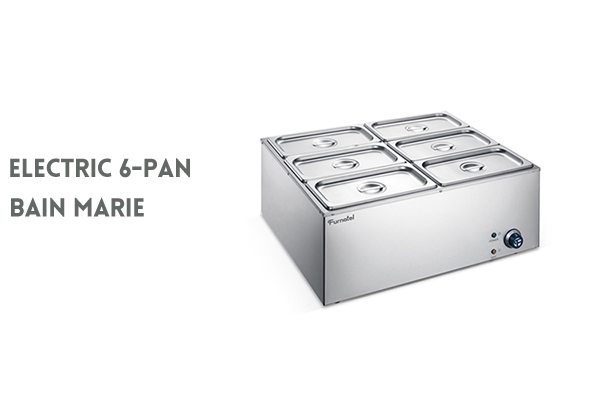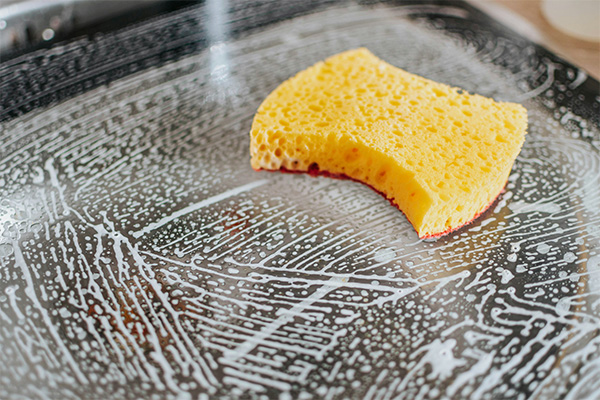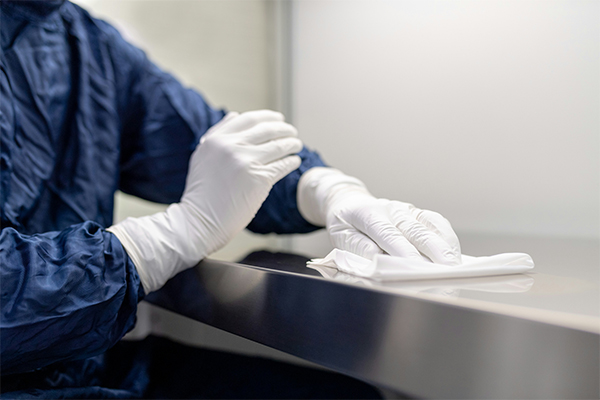Are you struggling with maintaining the commercial Bain-Marie after daily use?
Commercial Bain Marie Maintenance & Cleaning: Ultimate Guide
Are you struggling with maintaining the commercial Bain-Marie after daily use? Do you find yourself unsure about the proper and comprehensive cleaning process? In the changing world of commercial kitchens, a commercial bain marie is a cornerstone. It plays a crucial role in keeping food at safe serving temperatures, ensuring that food stays warm and safe for service. This guide combines industry expertise and actionable steps to help you keep your bain marie in peak condition. Shinelong will provide you with all the tips and tricks you need to maintain this essential equipment effectively.

Why Proper Bain Marie Maintenance Matters
Neglecting commercial Bain Marie maintenance isn't just a cleanliness issue—it directly impacts food safety protocols, operational efficiency, and compliance with health regulations. Here's a breakdown of the critical risks and technical consequences of poor maintenance:
Pathogen Proliferation & Food Safety Violations
Bain maries operate within the "danger zone" (4–60°C), where bacteria like Salmonella and Listeria multiply rapidly. Residual food debris or grease traps moisture, creating biofilms that resist standard sanitizers. According to NSF/ANSI 3 standards, failure to dismantle and clean hard-to-reach components can result in health code violations during inspections.
Thermal Inefficiency & Energy Waste
Limescale (calcium carbonate deposits) acts as an insulator on heating elements. A 1.5mm layer of scale reduces heat transfer efficiency by up to 12%, forcing the unit to consume 7–10% more energy to maintain target temperatures. This inefficiency escalates operational costs and strains electrical systems in high-demand kitchens.
Material Degradation & Component Failure
Stainless steel corrosion often begins at scratches or joints due to chloride exposure from cleaning agents or acidic foods. Pitting corrosion weakens structural integrity, while mineral deposits clog water lines and damage solenoid valves. For example, Shinelong Kitchen Equipment's service data shows that 80% of premature failures stem from improper descaling and abrasive cleaning practices.
Preparation for Cleaning: The Essential First Step
Effective cleaning starts with strategic preparation to ensure safety, compliance, and equipment protection. Follow this technical protocol:
Step 1: Assemble Industry-Compliant Tools
Chemical Selection: Use NSF-certified alkaline degreasers (pH 9–11) for organic residues and citric acid-based descalers (pH 2–3) for mineral deposits. Avoid chlorine-based cleaners, which corrode stainless steel.
Tool Specifications:
Non-abrasive nylon brushes (bristle hardness ≤500 gf/cm²) to prevent surface scratching.
Lint-free microfiber cloths (GSK-1 standard) to avoid fiber contamination.
Heat-resistant gloves (rated ≥150°C) for handling hot components.
Step 2: Execute Lockout/Tagout (LOTO) Procedures
Power down the unit via the circuit breaker—not just the control panel—to eliminate arc flash risks.
Wait 45–60 mins for internal temperatures to drop below 50°C before accessing heating chambers.
Attach a "Maintenance in Progress" tag to prevent accidental reactivation.
Step 3: Pre-Cleaning Component Management
Food Pan Removal: Discard leftovers immediately to comply with the FDA Food Code (no >4-hour room-temperature storage).
Water Drainage: Use a food-grade sump pump to evacuate all water from the reservoir, including trapped liquid in U-bend pipes.
Disassembly Checklist:
Detach removable racks, seals, and diffuser plates.
Label components with heat-resistant tape to streamline reassembly.
- 11Assemble Industry-Compliant Tools11Execute Lockout/Tagout (LOTO) Procedures11Pre-Cleaning Component Management
Daily Bain Marie Cleaning Routine: Quick but Effective
A systematic daily cleaning protocol prevents biofilm formation and aligns with the FDA Food Code. Follow this science-backed process:
Drain and Decontaminate Water Reservoirs
Stagnant water Legion breedsella bacteria within 8–12 hours. Use a food-grade siphon pump to remove all water, including trapped liquid in drainage channels.
Rinse the reservoir with 71°C water for 30 seconds to kill surface microbes.
Two-Stage Surface Cleaning
Grease Removal: Apply an enzymatic degreaser (pH 8.5–9.5) to emulsify fats. Let it dwell for 3 minutes before wiping with color-coded microfiber cloths (blue for food zones, red for exteriors).
Pathogen Elimination: Spray quaternary ammonium (quat) sanitizer (200–400 ppm concentration) on stainless steel surfaces. Allow 45 seconds of contact time for 99.9% pathogen reduction.
High-Touch Area Protocol
Clean control panels with 70% isopropyl alcohol wipes to avoid electrical damage.
Sanitize door handles and knobs twice daily during peak service hours.
Deep Cleaning Your Bain Marie: A Thorough Measure
Weekly deep cleaning prevents Listeria harborage in gaskets and joints:
Biofilm Disruption Technique
Soak removable parts in 60°C water with protease-based detergent for 20 minutes. This temperature breaks down protein-based biofilms without warping components.
Use ultrasonic cleaners for intricate parts like temperature probes (40 kHz frequency recommended).
Stainless Steel Restoration
Polish surfaces with 10% citric acid solution using figure-8 motions to eliminate heat-induced discoloration.
Rinse with deionized water to prevent spot formation.
Gasket Integrity Test
Apply food-grade dye to seal surfaces. Close the unit and check for dye transfer—a 0.5mm gap indicates replacement is needed.
![Deep Cleaning the Commercial Bain Marie]()
Descaling Procedure: Essential for Long-Term Performance
Hard water scaling reduces thermal conductivity by 15–25% per 3mm buildup:
Chemical Selection Guide
For calcium carbonate deposits: Use sulfamic acid (5% solution).
For silica scales: Hydrofluoric acid-based descalers (professional use only).
Thermal Activation Process
Heat descaling solution to 80°C in the reservoir—this increases reaction speed by 300% compared to cold treatments.
Agitate with a polypropylene paddle every 10 minutes to prevent gas pocket formation.
Neutralization Protocol
After descaling, flush with 1% sodium bicarbonate solution to neutralize residual acid.
Conduct pH strip test (target 6.5–7.5) before refilling.
Preventive Maintenance Tips for Your Bain Marie
Temperature Calibration
Use thermometers monthly. Insert probes into water and food zones simultaneously—a >2.8°C variance indicates element failure.
Lubrication Schedule
Apply NSF H1-certified silicone grease to hinges every 300 operating hours. Avoid petroleum-based products that degrade EPDM seals.
Professional Inspection Checklist
Test ground continuity (<0.1 ohm resistance).
Measure amp draw on heating elements (±10% of nameplate rating).
Troubleshooting Common Bain Marie Issues
There's no way to immediately figure out all the issues your Bain Marie might encounter. However, it's essential to address simple problems promptly, as this can save costs effectively. As a top Chinese commercial kitchen equipment manufacturer, Shinelong has compiled some troubleshooting for common Bain Marie issues that you may face in the food service business.
| Issue | Steps |
|---|---|
| No Power, No Heat |
|
| Yellow Light On, No Temp Rise |
|
| Power On, No Heat |
|
| Temp Control OK, No Light | Replace the indicator lamp. |
- What is a bain marie ideal for?A kitchen bain marie is ideal for keeping food warm and maintaining its texture and quality.
- What is the purpose of a bain marie?The purpose of a bain marie is to provide a controlled temperature environment to keep food warm, prevent overcooking or burning, and maintain the food's quality and texture.
- How many types of bain marie are there in a commercial kitchen?In a commercial kitchen, there are multiple types of bain marie. For example, a catering bain marie is mainly used for serving and transporting food; a Restaurant bain marie is typically installed in the dining area to keep food warm and fresh.
- When to use a bain marie?Commercial bain maries are used when serving food to maintain its temperature and quality. Restaurant bain marie is commonly used during peak service times to ensure food remains hot. It is also used when food needs to be kept warm for an extended period, such as during buffets or catered events.
- How often should bain-marie water be changed?Change water at least weekly; replace immediately if contaminated or cloudy.
- How to keep food fresh in bain marieMaintain proper temperature (63–74°C), cover food, and replace within 4 hours.
- How to provide after-sales service?1. Online support, free spare parts by warranty
2. If there is a distributor,there will be local support
- Can chocolate burn on bain-marie?Yes, if overheated. Monitor temperature closely (max 65°C) to avoid burning.
- Are you manufacturer?Yes, we are half a manufacturer, half a trading company. Manufacturing Furnotel brand equipment, trading for all kinds of kitchen equipment, especially turn-key solutions.
- Do you have installation service?Yes, we have engineering team for installation instructions, but it will be extra charged.
- How long can food last in a bain marie?Maximum 4 hours. Follow food safety guidelines for hot holding.
- What kind of kitchen project can you do?We can provide A to Z solution to various kitchen,more than 2800 cases, such as hotel project,restaurant,bakery shop, fast food shop, cateen, central kitchen,café. Pls leave message to ask for reference book.
- Where are your customers located?We've provided service to more than 120 countries,pls leave message to ask for customer map.
- How to descale a commercial bain marie in the commercial kitchen?Monthly descaling. Use the designated descaling solution and hot water.

Since Shinelong was established in Guangzhou in 2008, we have made great strides in the fields of commercial kitchen planning and kitchen equipment manufacturing.
IF YOU HAVE ANY QUESTION,PLEASE CONTACT US.
WhatsApp: +8618902337180
WeChat: +8618924185248
Telephone: +8618924185248
Fax: +86 20 34709972
Email: info@chinashinelong.com
After-Sales Contact
Telephone: +8618998818517
Email: service@chinashinelong.com
Add: No. 1 Headquarters Center, Tian An Hi-tech Ecological Park, Panyu Avenue, Guangzhou, China.




















